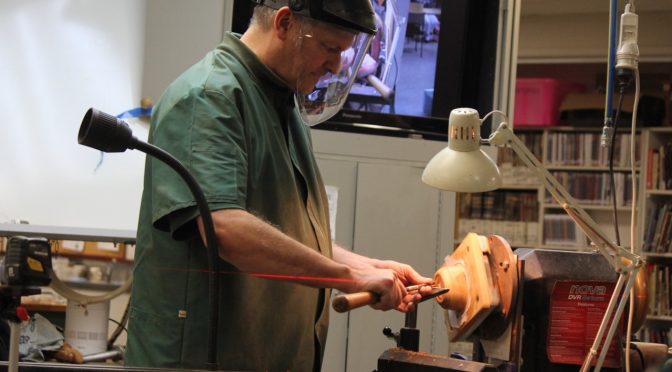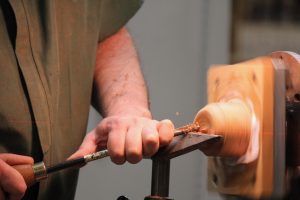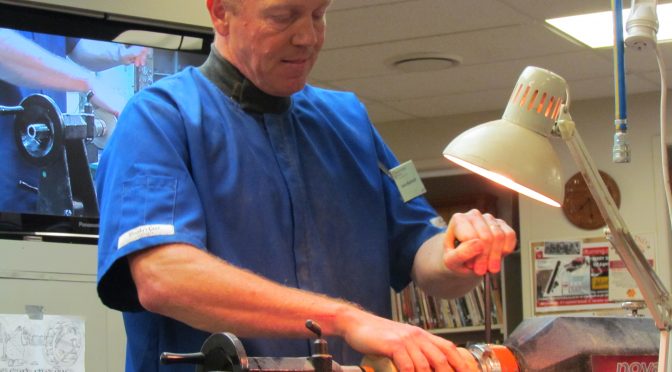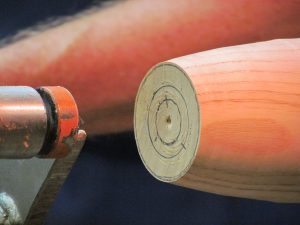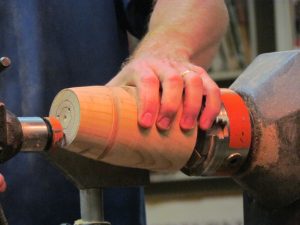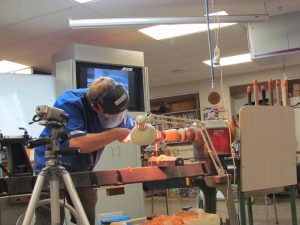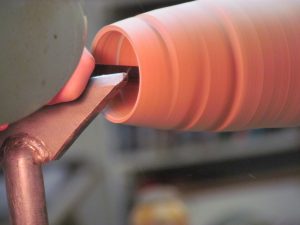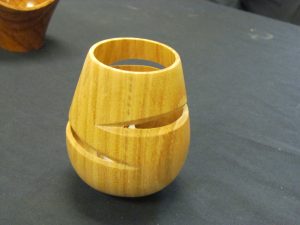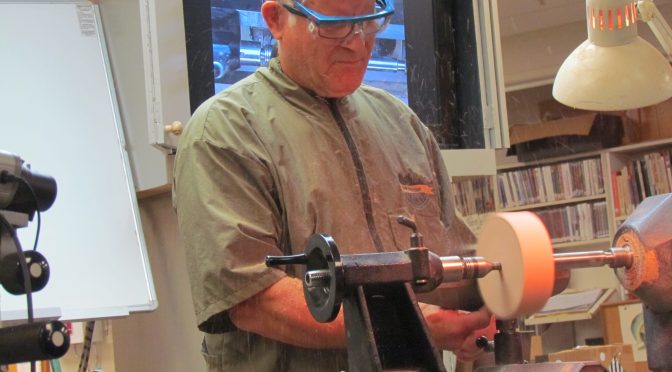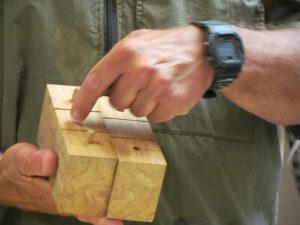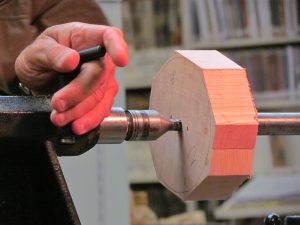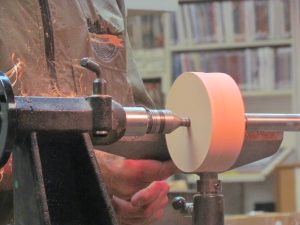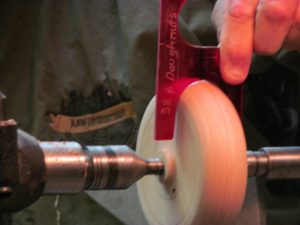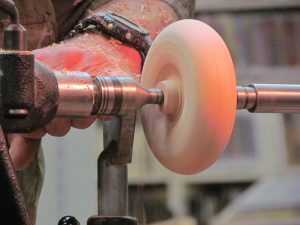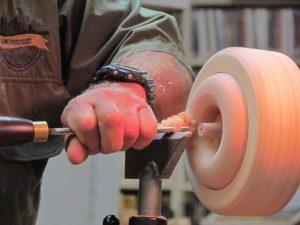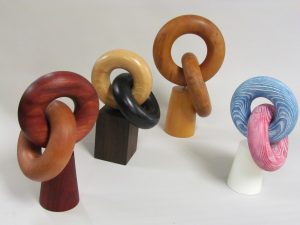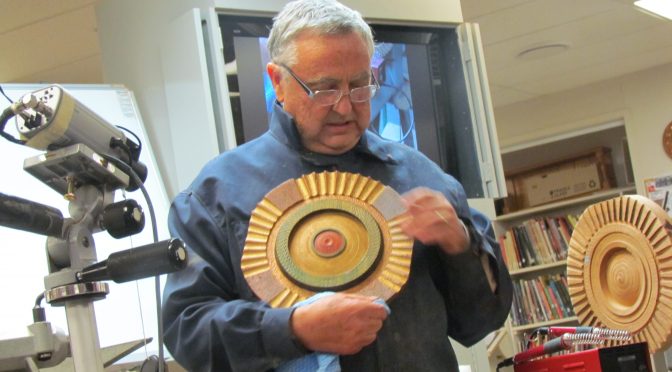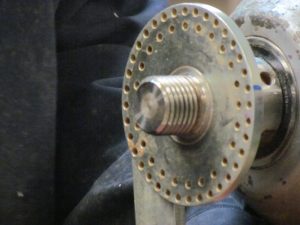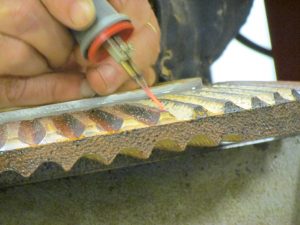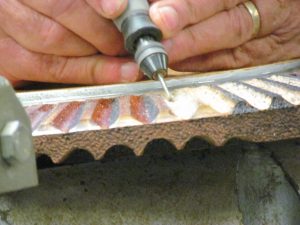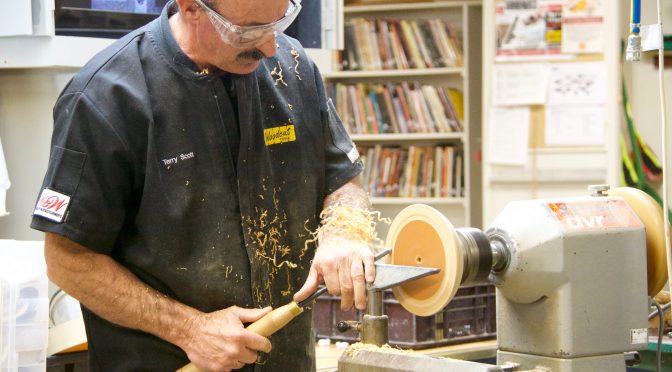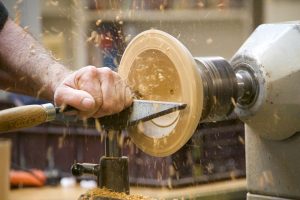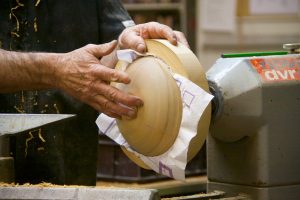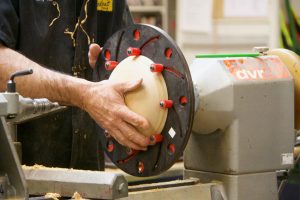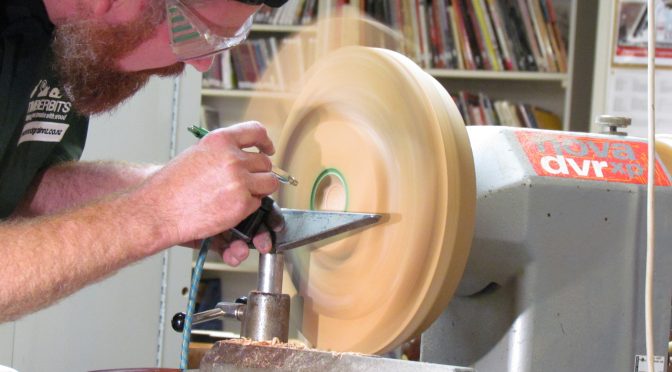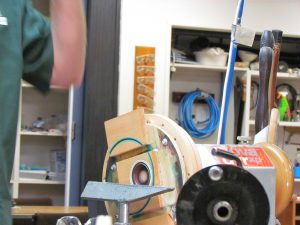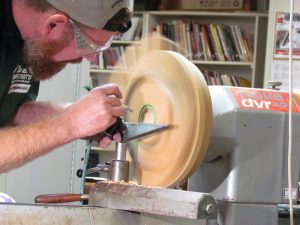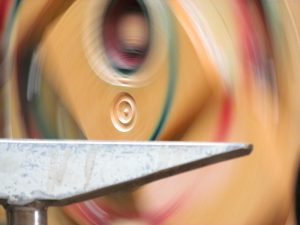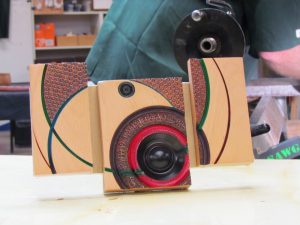Demo: Ian Connelly
Date: 30 May 2018
Report by : John Whitmore
On 30 May, our new President, Ian Connelly, stepped into the breach and displayed a device that arrived as an accessory with his first lathe and hadn’t seen the light of day since. This was very much in keeping with the theme for the term – ‘out of your comfort zone’. It was an engineer’s chuck for making all things oval eg a picture frame or box; or at least all things oval that would clear the bed of the demonstration lathe. The contraption had been modified to fit a lathe of the same centre height, otherwise he would have been in trouble.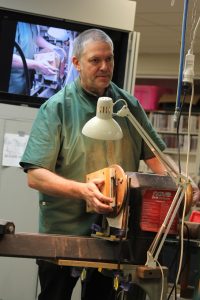
The elliptical chuck was not pretty; but was certainly solidly made.
This comprised 2 assemblies, involving a lot of steel. A frame was clamped to the lathe bed (so making it impossible to swivel the headstock for greater capacity) and comprised a back plate with slide to which a large roller bearing was attached, centred on the spindle height. The bearing acts as a cam during turning to facilitate movement of the workpiece from side to side that, together with the lathe’s rotation, results in an ellipse at the business end. The relative position across the lathe bed gives variable degrees of ovality.
The second assembly was the drive mechanism which comprised a plate structure upon which the workpiece was glued and with an integral morse taper that fitted through the large roller bearing into the headstock spindle. This morse taper was secured using a tie rod to ensure that it did not come adrift during proceedings – to the immense relief of parties sitting in the front row.
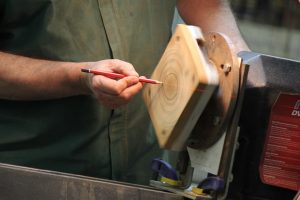 Turning of an oval box shape proceeded at no more than 400rpm, accompanied by various mechanical noises and contributions from the audience – some of the comments being helpful, but most not.
Turning of an oval box shape proceeded at no more than 400rpm, accompanied by various mechanical noises and contributions from the audience – some of the comments being helpful, but most not.
The interesting points were that cutting must occur on the centreline otherwise there will be imbalance created in the workpiece; and the cutting tool remains stationary while the workpiece is moved both away and back again with each revolution. With all this unnatural movement, it was something of a blessing that the speed was kept low.
For more detail of the mechanics involved, please consult our library book “Adventures in Woodturning” by David Springett or the AAW website for a downloadable explanation.
Vicmarc also make an oval turning device based on designs by Professor Johannes Volmer
This was an unusual demonstration and very well received.
